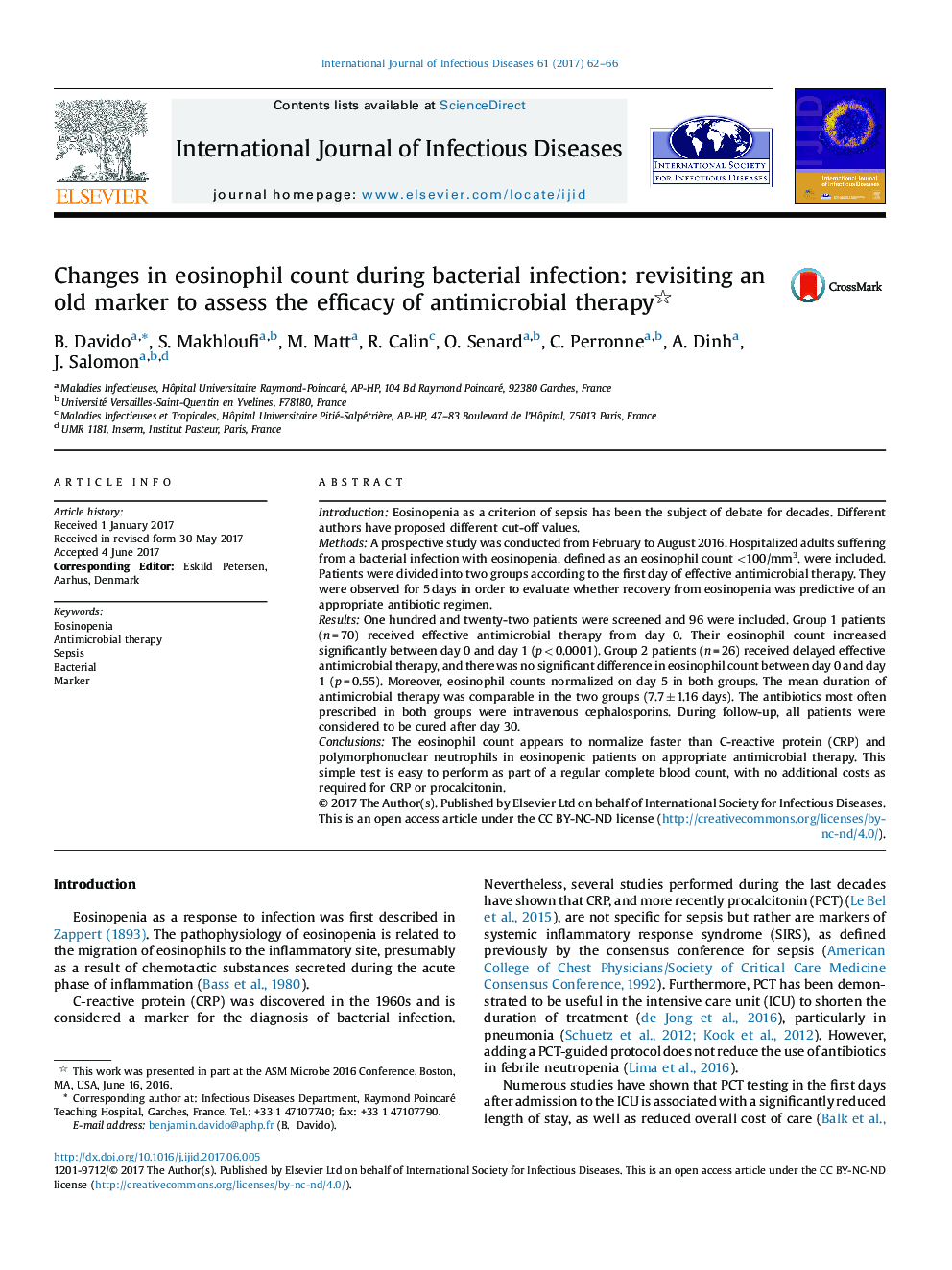| کد مقاله | کد نشریه | سال انتشار | مقاله انگلیسی | نسخه تمام متن |
|---|---|---|---|---|
| 5667388 | 1592032 | 2017 | 5 صفحه PDF | دانلود رایگان |
- Eosinopenia is a very sensitive but not specific marker of sepsis.
- Recovery from eosinopenia on day 1 reflects an appropriate ongoing antibiotic regimen.
- In eosinopenic patients, the change in eosinophil count is a valuable marker.
- Using the change in eosinophil count is simple and cost-effective.
IntroductionEosinopenia as a criterion of sepsis has been the subject of debate for decades. Different authors have proposed different cut-off values.MethodsA prospective study was conducted from February to August 2016. Hospitalized adults suffering from a bacterial infection with eosinopenia, defined as an eosinophil count <100/mm3, were included. Patients were divided into two groups according to the first day of effective antimicrobial therapy. They were observed for 5 days in order to evaluate whether recovery from eosinopenia was predictive of an appropriate antibiotic regimen.ResultsOne hundred and twenty-two patients were screened and 96 were included. Group 1 patients (n = 70) received effective antimicrobial therapy from day 0. Their eosinophil count increased significantly between day 0 and day 1 (p < 0.0001). Group 2 patients (n = 26) received delayed effective antimicrobial therapy, and there was no significant difference in eosinophil count between day 0 and day 1 (p = 0.55). Moreover, eosinophil counts normalized on day 5 in both groups. The mean duration of antimicrobial therapy was comparable in the two groups (7.7 ± 1.16 days). The antibiotics most often prescribed in both groups were intravenous cephalosporins. During follow-up, all patients were considered to be cured after day 30.ConclusionsThe eosinophil count appears to normalize faster than C-reactive protein (CRP) and polymorphonuclear neutrophils in eosinopenic patients on appropriate antimicrobial therapy. This simple test is easy to perform as part of a regular complete blood count, with no additional costs as required for CRP or procalcitonin.
Journal: International Journal of Infectious Diseases - Volume 61, August 2017, Pages 62-66
